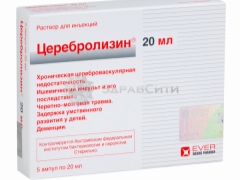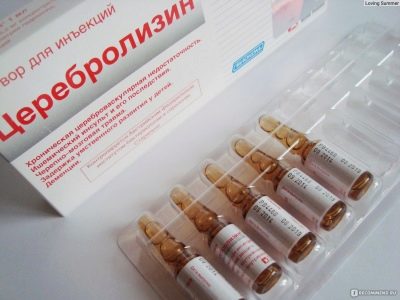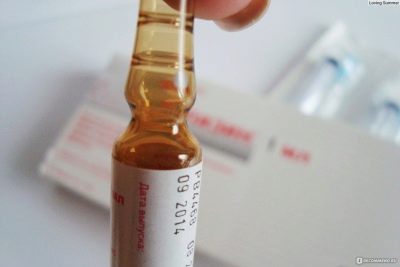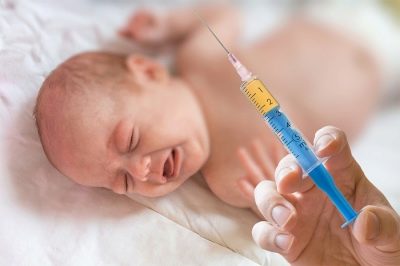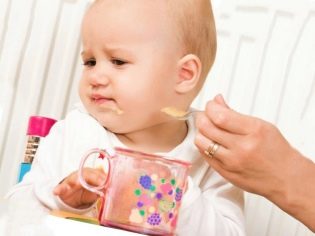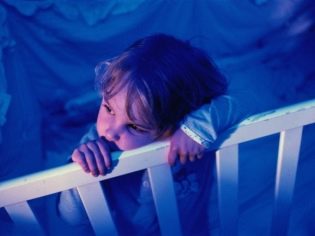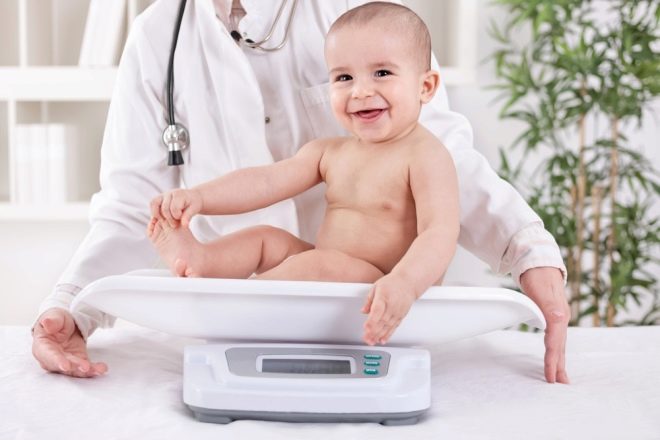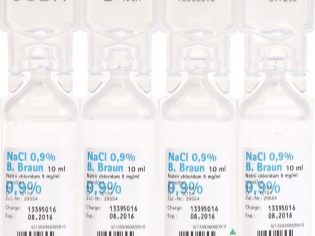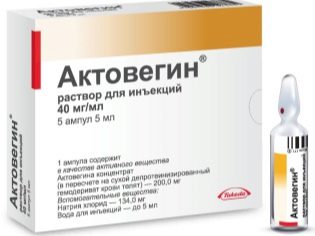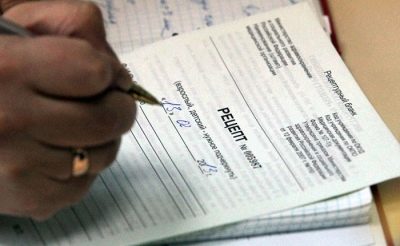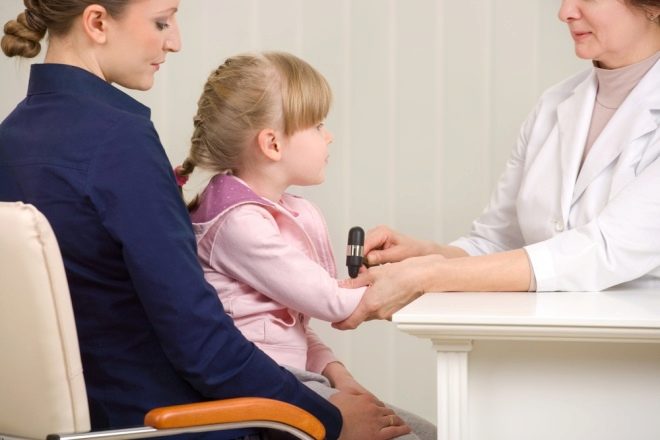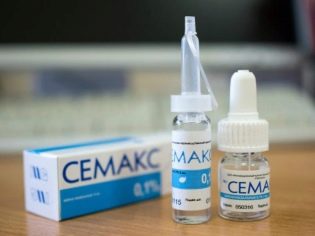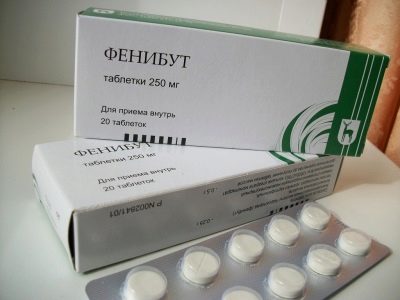The use of Cerebrolysin in the treatment of children
"Cerebrolysin" is a drug from the group of nootropics, has the ability to influence the state and functioning of the brain. This medicine is in demand in the practice of neurologists, often prescribed for adults with Alzheimer's disease, stroke or dementia. Prescribe this medicine in childhood.
Release form and composition
"Cerebrolysin" is available for sale only in injectable form, therefore, syrups, tablets, capsules, drops and other drug options with this name do not exist. The drug is placed in ampoules of 1, 2, 5, 10 and 20 ml, as well as in vials of 30 ml. Ampoules are made of brown glass and are sold in a box of 5 or 10 pieces. The bottles are made from the same material and can be sold individually or in 5 bottles in one pack.
The solution itself is a clear liquid with a yellowish-brown color. Its main component is cerebrolysin concentrate, extracted from the brain of pigs. Its amount in 1 ml of solution is 215.2 mg. Additionally, sterile water and sodium hydroxide are present in the medication.
Operating principle
Cerebrolysin concentrate represented in the medicine is a complex of peptides with a low molecular weight (not more than 10 thousand daltons). Such a small size allows them to cross the blood-brain barrier and affect nerve cells. Such molecules are called neuropeptides because of their specific effect on the brain. They are able to:
- improve energy metabolism in brain cells;
- stimulate the synthesis of protein molecules in neurons (inside cells), which is especially valuable during the period of active brain development or during its aging;
- protect neurons from the harmful effects of free radicals, lactate acidosis and other damaging factors;
- prevent the death of nerve cells due to ischemia or hypoxia;
- reduce the neurotoxic effect of amino acids with a stimulating effect;
- stimulate the development and growth of new nerve cells (such activity is called neurotrophic);
- improve the memorization process and other cognitive functions.
Are children prescribed?
According to the instructions, the solution "Cerebrolysin" can be applied to patients of any age. Unlike many other neuroprotective and vasoactive drugs, the drug passed clinical trials even in the youngest patients (newborns and infants of the first year of life). They confirmed the safety of this medication, so the injections of Cerebrolysin are prescribed to children from birth, both to infants, and school-age patients and adolescents.
Indications
Reasons for physicians to prescribe Cerebrolysin for children can be:
- traumatic brain damage (including childbirth);
- Cerebral palsy;
- attention deficit (ADHD syndrome);
- mental retardation;
- delayed speech development;
- spinal cord injury;
- severe depression.
Contraindications
Treatment with Cerebrolysin is prohibited if:
- the child has serious pathologies of the kidneys, due to which severe insufficiency of the function of this organ has arisen;
- epilepsy is diagnosed in a baby;
- The patient has previously been identified hypersensitivity to the active substance of the solution.
The use of the drug in children with allergic diathesis requires increased control by the doctor.
Side effects
In some young patients, Cerebrolysin can provoke loss of appetite, agitation, insomnia, aggressive behavior. Due to the introduction of the solution too quickly, sweating, dizziness, feeling of heat, increased heart rate or arrhythmia may occur. Sometimes there is a local reaction to the injection in the form of itching, burning or redness.
In more rare cases, Cerebrolysin injections cause diarrhea, an allergic reaction, epilepsy, vomiting, chills, fever, back pain, shortness of breath and other ailments. If any negative symptoms occur, consult a doctor.
Instructions for use
The introduction of Cerebrolysin in practice is possible in several ways, the choice of which depends on the prescribed dose. For the introduction of 1-5 ml of the drug is usually chosen intramuscular injections, and if necessary, inject 5-10 ml using intravenous jet injection.
The drug in a larger volume (more than 10 ml) is administered as an intravenous drip infusion. For droppers, the drug is often diluted in a physiological solution, taking it in a volume of from 100 to 200 ml, depending on the amount of Cerebrolysin. The drug is injected into a vein for at least 15 minutes, but usually drips within an hour, since the rapid release of the drug into the bloodstream can cause unwanted negative effects.
The dosage of "Cerebrolysin" for children is calculated by the weight of the patient. To do this, the child's body weight in kilograms is multiplied by 0.1-0.2 and get the number of milliliters of solution, which must be entered per day. For example, if the medication is administered to a newborn with a weight of 5 kg, then the required dose for it will be 0.5-1 ml of Cerebrolysin, that is, the administration will be intramuscular.
The duration of the use of "Cerebrolysin" depends on the disease, but usually the injections are prescribed daily course of 10-20 days.
If necessary, after some time, the treatment is repeated until the patient's condition improves.
Compatibility with other medicines
"Cerebrolysin" can be mixed with 0.9% NaCl solution, 5% glucose or dextrose solution, as well as Ringers solution. However, it is incompatible with solutions that can change the pH or contain lipids. Use together with MAO inhibitors or antidepressants requires caution, as it can cause an increase in blood pressure.
The drug can be administered simultaneously with vitamins and drugs that have a positive effect on blood circulation (for example, with "Actovegin"), But should not be mixed with them in the same syringe. Also, it is not recommended to add any amino acid solutions to the syringe for Cerebrolysin.
Terms of sale and storage
To purchase ampoules or vials in a pharmacy, you must first obtain a prescription for Cerebrolysin from your doctor. The price of the drug is affected by the volume of the solution in one ampoule and the number of ampoules in the pack. On average, for 10 ampoules of 2 ml or 5 ampoules of 5 ml you need to pay 1000-1100 rubles.
Keep the medication must be protected from direct sunlight. The recommended storage temperature is no higher than +25 degrees Celsius. The medicine should not be available for small children.
If during storage the solution has lost its transparency, it cannot be used for injections, but should be discarded. The shelf life of Cerebrolysin in vials is 4 years, in ampoules - 5 years.
Reviews
On the treatment of children "Cerebrolysin" as parents and experts in the field of neurology speak mostly well. They confirm the positive effect of the drug in the case of ZRR, hyperactivity, mental retardation or hypoxic brain damage during childbirth.
The disadvantages of the drug mainly include its dosage form (shots) and the high cost.Adverse reactions to injections are very rare in children, but in some reviews, mothers complain about the appearance of nervous excitement, allergies, dizziness, dyspepsia and other negative symptoms in babies.
Analogs
If it is necessary to replace Cerebrolysin with another drug, the doctor may prescribe a nootropic agent with a similar effect on the brain, eg:
- «Semax». This medicine is released as nasal drops. Its positive effect on the brain is due to a synthetic peptide. Children drug with a concentration of 0.1% discharged from 7 years. It is in demand with decreased memory, hyperactivity, enuresis, sleep disorders and other problems.
- «Cortexin». This medicine, like Cerebrolysin, is produced in an injectable form. It also contains low molecular weight polypeptides that can affect nerve cells, so it is prescribed for brain injuries, developmental delays and many other neurological problems. This medicine is allowed to be administered intramuscularly from birth.
- «Phenibut». This tablet preparation containing aminophenyl butyric acid is prescribed for sleep disorders, stuttering, asthenia, motion sickness, and other problems. It is allowed to give to patients older than 3 years.
- «Pantogam». This medicine on the basis of hopantenic acid can be given to children of any age. It comes in two forms: syrup and tablets. The drug is used for nervous tic, neurosis, problems with attention and other indications.
On the neurological problems in children, see the following video.
